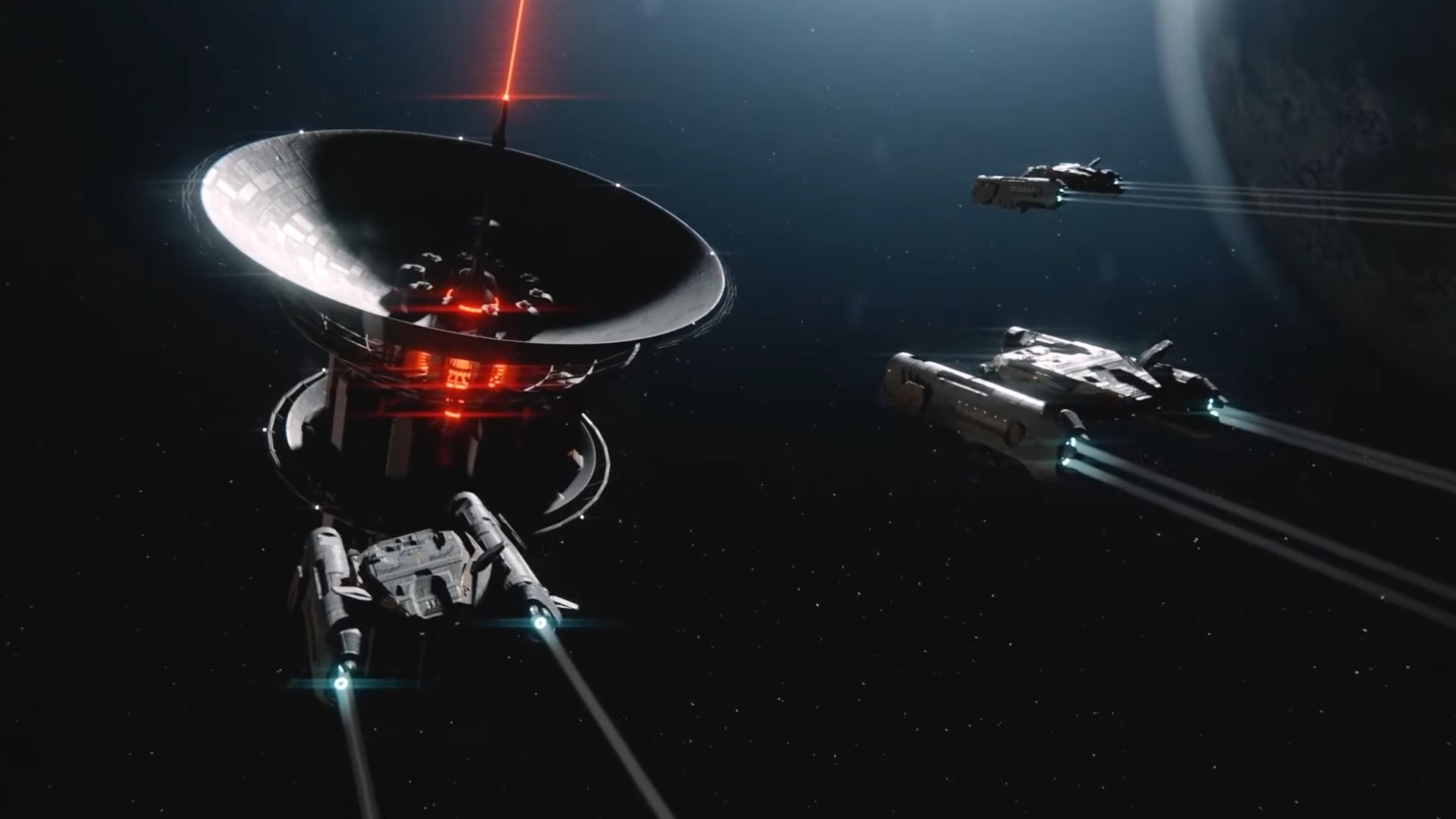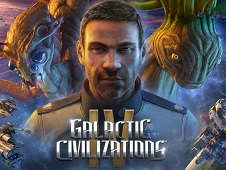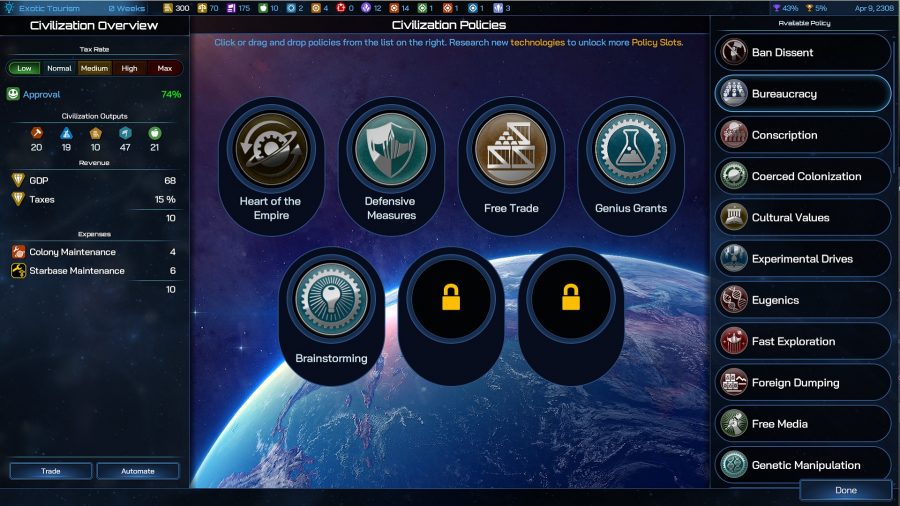Once upon a time, there was Galactic Civilizations. Our original space 4X game started out as a community project; nearly 30 years ago in 1993, I was a college student and spent my free time on Usenet talking about turn-based strategy games with other fans of that genre.
I loved Sid Meier’s Civilization – released in 1991 – but I wanted a game that took some of those elements and put them on a galactic scale. From my dorm room, I worked on the game and put out ‘beta’ builds (that by today’s standards would be considered pre-pre-alpha) for people to comment on and give suggestions. This is how Galactic Civilizations was born.
The first Galactic Civilizations game eventually released in 2003, with Civilization well into its third entry. After it launched, I made it my full-time job and that’s how Stardock came to be. As a one-person enterprise, I relied heavily on other people for their input, although not on the art work – I was doing all of that myself. I leave it to history to judge whether that was a good thing or not.
Lessons from Galactic Civilizations III
The third Galactic Civilizations game was the first one I didn’t design. I was busy helping Mohawk Games – who released the amazing Old World – and Oxide Games, who are also working on something really exciting that I can’t talk about right now.

Galactic Civilizations III faced the challenge of being rewritten from scratch and having a mostly new development team. Nevertheless, the game was both a commercial and critical success and gave us a really solid foundation to build future games on. That said, the game wasn’t without its critics (and I admit to being a pretty vocal critic myself). Let’s take a look at some of the things the community objected to:
- More flavor – The game was so data-driven and focused on being translated into lots of languages for 1.0 that we drastically cut back on the custom and interesting flavor text that made the GalCiv games feel so special.
- Not balanced for big maps – Lots of players like the big maps, but the game mechanics really weren’t equipped to deal with it. This really showed up with the AI.
- The UI – The UI felt dated in a lot of areas. Lots of ‘screen dirt’ and too much clicking to get things done.
- Felt like a board game – Strategy games feeling like board games goes way back. There’s no problem with playing a bit like a board game, but you lose a lot of people if the game is really transparent about it. It can be an immersion killer.
Six years later – with all the DLC packs and enhancements we’ve released during that time – Galactic Civilizations III has grown into a really good game. But in an era when you also have games like Stellaris, Endless Space 2, and Distant Worlds out there, if your game plays it safe in every aspect then you’ll end up being runner-up against the games that specialize. Lesson learned: don’t try to be all things to all people.
 Pre-order now
Pre-order nowGalactic Civilizations IV and the community
We have decades of feedback and suggestions from players. We don’t always agree with the suggestions – and sometimes even the really good ones just can’t go in – but I want to talk about some of the feedback we got from the third game and how it can be applied here. There are also several examples of how the alpha program we ran for Galactic Civilizations IV has changed the game for the better.
Advisors
Galactic Civilizations never guided players on what they should do. This often resulted in players, especially newcomers, feeling overwhelmed and frustrated. Now, the AI is plugged into the UI to tell the player what it thinks they should do.
GalCiv IV now has a military, cultural, technology, and economic advisor who will tell you what they think. This is the same system the AI uses under the covers, but it’s now exposed to the player. We also have a tooltip panel that can appear down the right-hand side that offers additional context for a feature or an event, with options to find out more.
Cleaner UI
The third GalCiv was guilty of throwing heaps of stuff at the player at once while simultaneously making the important things more difficult to get at. Let’s compare these two screenshots, in which the player wants to see a list of their planets. First, we have Galactic Civilizations III:
On the right you see planets, but look at the amount of lines and screen space used. Then look at planets on the map which provide just the name. So there’s a lot of screen space used, but not a lot of useful information provided.
Now in GalCiv IV:
We know from experience that tooltips provide a much better way of getting into detail. The community told us what data they wanted to see at a glance and what data could wait until a mouse-over. Here you can see at a glance what a planet provides right on the map. You can tell how good an uncolonized planet is by the size (bigger is better).
But more than that, in terms of the data a player will care about, compare the two screenshots and you get an idea of how much was learned from listening to the community talk about the UI over the past few years.
Policies
In GalCiv III, we had governments. Players would pick a government type, which would then provide specific perks. A government would have a bunch of specific perks, and you got all or nothing.
Here is a look at GalCiv III Governments towards the end of the game’s life-cycle:
Players liked the idea of these perks for customizing their civilization, but they really wanted to pick the perks individually. Hence, Galactic Civilizations IV’s Policies were born:
Now there’s a big list of perks you can have. Each one has a particular buff and a side effect, and this lets players customize their civ to a more granular level than before. Also, consider the UI itself: this one screen handles both the policies and the income/expense data, whereas to do this previously you had to jump between two screens.
Don’t make me grind another five hours!
By far the biggest set of feedback we’ve gotten over the years is one that’s common to all 4X strategy games, and that is: “I have won this game, but I don’t want to play another five hours to actually get my victory declared.”
Galactic Civilizations IV introduces a new victory type: Prestige. Players earn prestige points through virtually every aspect of the game, and the civilization that reaches the score threshold first is declared the winner.
New face: Check out the new GalCiv IV races – Festron, Mimot, Baratak Grove, and The Navigators
Now, let’s assume you’re really far along and you’re dominating. Your prestige score far outclasses everyone else’s and you can see the finish line. You’re going to win, but how do you get the game to acknowledge this? This is where Galactic Achievements come in.
In each session, depending on the setup conditions and various other factors, there are a bunch of ‘quests’ that the player can launch at any time. Some of these are as straightforward as opening up a portal to deal with the Dread Lords. Others involve turning the whole galaxy against you and challenging you to survive the onslaught, while others still are more about building over-sized monuments to your glory.
Regardless of which ones you pick, you get a sizable amount of prestige points upon completion. So instead of having to deal with another 300 turns of grinding, you can attempt a galactic challenge and help put yourself over the finish line (or go down in a blaze of glory).
 Galactic Civilizations IV Galactic Civilizations IV $39.99 Pre-Order Network N earns affiliate commission from qualifying sales.
Galactic Civilizations IV Galactic Civilizations IV $39.99 Pre-Order Network N earns affiliate commission from qualifying sales.
If anything, community interaction is becoming more important than ever. The tools have gotten so much better thanks to services like Discord, Teams, and easy file sharing. The line between developer and player gets more blurred each year. And I, for one, welcome our new gamer overlords. Now if we can just get them all hooked up with Perforce!
Make sure you pre-order Galactic Civilizations IV today to get instant access to the beta.
Written by Brad Wardell.





